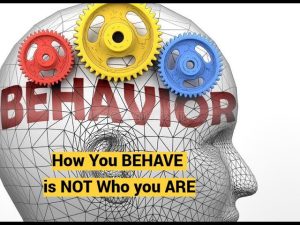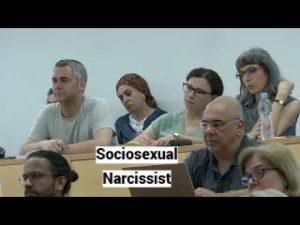Artificial Human Intelligence: Brain as Quantum Computer?
1. Background and Chronfield Theory
- The speaker acknowledged Eton Sachard for expanding the geometric chronon field theory originally proposed in the 1980s, crediting him with 90% of its current form [00:00].
- A recent book sponsored by the Vaknin Rangeloska Foundation summarizes the current state-of-the-art chronfield theory [00:00].
- Historical context includes discussions with Yakir Auronov and Richard Feynman influencing ideas about brain perception and quantum mechanics from 40 years ago [02:00].
2. Brain’s Perception of Quantum States
- The brain is proposed to detect only collapsed states (pointer states) of the wave function, filtering out all other superposition states [01:00].
- Explanation of the wave function, superposition, and state vector, emphasizing the brain’s limitation to detect only collapse states which appear deterministic after measurement [01:20].
- This filtering is a fundamental constraint of the brain’s electrochemical construction rather than reality itself [02:00].
- Collapse states are stable, relatively long-lived, negentropic (order-enhancing), and therefore conducive to survival, unlike ephemeral non-collapsed states [05:30].
3. Mathematical and Theoretical Framework
- The use of information theory, thermodynamics, and dynamics of complex systems including strange and non-chaotic attractors is introduced to mathematically capture collapse states as signals and non-collapse states as noise [07:30].
- The speaker is developing a mathematical model for a theoretical implantable PLL (Phase Locked Loop) computer chip that could enable the brain to perceive the entire wave function rather than collapsed states alone [08:30].
- This mathematical model treats the non-reduced states as noise and pointer (collapsed) states as signals with respective probability measures [08:50].
- The chip would effectively deceive the brain to perceive all states as collapsed states, creating a virtual reality where the brain can access infinite realities, expanding its computational capacity exponentially [10:00].
- The potential transformation of the brain into a quantum computer with 70-80 billion qubits, vastly surpassing current quantum computers with a few thousand qubits [10:15].
- Philosophical implications of treating the brain itself as a platform for artificial intelligence by rewiring or reprogramming it for fundamentally new quantum computation capabilities using this chip [11:00].
4. Interaction of the Chip with Quantum States
- The chip does not need to interact with non-collapsed states in a Newtonian action-reaction sense since all states are mathematically known via the wave function [09:35].
- The purpose of the chip is to trick the brain into perceiving the entire state vector as collapsed, thus unlocking computational use of multiple quantum states simultaneously [09:55].
- The deterministic nature of the wave function supports this approach, suggesting that the measured collapse is a brain limitation rather than a physical collapse in reality [10:45].
5. Measurement Problem and Philosophical Considerations
- Discussion about the Copenhagen interpretation and the famous quantum measurement problem, highlighting the paradox that measurement appears to determine reality and collapse the wave function [19:00].
- The speaker suggests that the limitation lies within the brain and measuring devices, which are constructed to perceive only collapse states, explaining the measurement problem as a perceptual bias [19:30].
- Collapse states’ stability and order-enhancing role provide an evolutionary advantage and support survival, but all quantum states share equal ontological status except for brain-imposed measurement limitations [20:00].
- Measurement is viewed as an act that introduces local order, with order generation emanating from the observer rather than the quantum event itself, refuting mystical interpretations of consciousness creating reality [24:30].
- Order and negentropy from collapse states contrast with entropy increase from non-collapsed states which decay rapidly, explaining brain preference for collapse states [25:00].
- Suggests that complex fractal or holographic information storage models reflect the encoding of universe information in quantum states or particles [26:00].
6. Quantum Mechanics, Locality, and Determinism
- The problem of nonlocality and instantaneous ‘spooky action at a distance’ is addressed by proposing the brain’s limitations cause a misperception of reality; a deterministic quantum mechanics would remove this paradox [22:30].
- The information about order increase and measurement constraints is potentially fractally distributed throughout the universe’s fabric, accessible at every quantum scale [26:00].
- Proposes a determinism reinstatement in quantum mechanics by removing observer-biased collapse assumptions, aiming to unify physics with greater parsimony as in the original chronfield theory [28:00].
7. Current Status and Future Directions
- The speaker is currently focused on the mathematics of the PLL chip and chaos theory to develop theoretical specifications for a device that would allow the brain to access the full quantum state vector [07:00, 28:30].
- Early findings show strong affinity between chaos theory attractors and quantum pointer states, supporting the approach [29:00].
- The work is ongoing and expected to take years but aims to clarify quantum measurement limitations and develop pathways for leveraging the brain’s computational potential [28:30].
- Emphasizes the importance of rethinking physics starting with brain and measurement-device limitations, using mathematics as a substrate-independent tool to address fundamental quantum issues [29:40].
This summary reflects thematic clusters from the meeting transcript with key points and approximate timestamps, facilitating focused review of complex ideas discussed.






